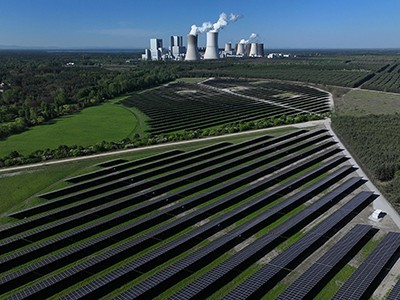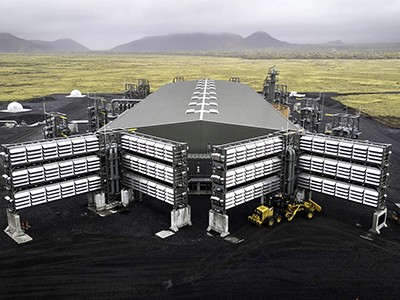Achieving the global temperature targets set in the Paris climate agreement requires deep, rapid cuts in greenhouse-gas emissions, and therefore the swift phase-out of fossil fuels. Many factors stand in the way. One of the most pernicious is carbon offsets.
Offsets are tradable credits from projects that claim to reduce emissions, either by avoiding them or by removing carbon dioxide from the atmosphere. Businesses and countries trade these credits — each representing the equivalent of one tonne of CO2 — to ‘neutralize’ their own emissions.
Net zero needs AI — five actions to realize its promise
Although conceptually appealing, this reliance on offsets has fatal flaws. In practice, it’s difficult to ensure that they represent real emissions reductions rather than ‘hot air’, with the claimed climate benefits existing only on paper. Equally challenging is ensuring that emission reductions are ‘additional’, meaning that they would not have occurred without the incentive provided by the sale of carbon credits. For projects credited for sequestering carbon, it is also crucial to ensure that the CO2 is locked away permanently and not released back into the atmosphere later.
Most carbon-offset schemes fall foul of one or more of these requirements. Thus, offsets undermine decarbonization by enabling companies and countries to claim that emissions have been reduced when they have not. This results in more emissions, delays the phase-out of fossil fuels and diverts scarce resources to false solutions.
Yet, climate-policy processes continue to rely on them. The operationalization of Article 6 of the Paris agreement and full implementation of the Carbon Offsetting and Reduction Scheme for International Aviation, both achieved in 2024, are set to turbocharge demand for carbon credits. In parallel, voluntary carbon markets are promising to raise standards as a way of further legitimizing and scaling up offsets.
Of greatest concern is the expanding role of offsets in domestic carbon-pricing schemes, such as emissions trading and carbon taxes. Although the European Union’s Emissions Trading System phased out offsets in 2020, they still feature in most major carbon-pricing schemes outside Europe, including in China, Korea, Japan, Indonesia, Singapore, California, Canada and Australia. They are even permitted as a substitute for paying carbon taxes in countries such as South Africa, Mexico, Chile and Colombia.
Such practices threaten to undermine global decarbonization efforts. Low-quality offsets artificially depress carbon prices, which dilutes the incentive for industries to cut their emissions and weakens the effectiveness of carbon-pricing schemes.
Here, we outline the problems and call on decision makers to exclude offsets from carbon-pricing schemes.
No easy solution
Carbon offsetting sounds simple on paper. In practice, it is anything but.
It is extremely difficult to evaluate the emission reductions achieved by offset projects because calculations require comparing outcomes with ‘business-as-usual’ projections. For example, calculating the climate benefits from a project that avoids deforestation involves comparing a forest’s actual carbon stock to that in a counterfactual scenario in which the project did not happen. The hypothetical nature of such calculations invites manipulation and can tempt project developers to overestimate business-as-usual emissions to generate more credits.
Heatwaves linked to carbon emissions from specific companies
Fundamental imbalances in the information used in offset schemes leave them vulnerable to these outcomes. In most cases, only project leaders and developers know whether their projects are dependent on credit revenues and are therefore truly additional. This makes it difficult for administrators to screen out shoddy projects.
Even where projects are additional, errors can arise from inaccurate measurement of emissions and carbon stocks. These risks are most acute when the sources and sinks are variable. For example, stocks of soil organic carbon vary naturally across landscapes and through time. This is a product of diversity in soil characteristics, topography and vegetation cover, as well as in seasonal, annual and decadal changes in temperatures and rainfall. The variability makes it difficult to accurately measure changes in the carbon stock and ensure that the credited carbon storage is fully attributable to the project1.
It is also difficult to ensure that credited carbon removals remain sequestered. Many carbon sinks are susceptible to natural disturbances, such as droughts and wildfires, which can release carbon stored in trees and soils. Carbon stocks can also be lost through the clearing of vegetation and other changes in land-management practices. Despite these risks, most offset schemes mandate that credited sinks be maintained for only 40 years or even less. Given that CO2 emissions require thousands of years to be reabsorbed by Earth’s climate system2, credited removals need to lock away carbon for a similar period to genuinely neutralize the warming caused by the emissions that are claimed to be offset.
Misaligned incentives
In most markets, the risks associated with the supply of low-quality goods and services can be alleviated if consumers are able to judge quality and seek redress when standards are not met. With offsets, however, the complexity and a lack of transparency make it close to impossible for buyers to make informed decisions about the quality of most credits. Moreover, many buyers are not incentivized to care. Typically, their priority is to procure credits at the lowest possible cost, a fact evidenced by a 2024 study revealing that the largest corporate buyers consistently choose low-priced credits over higher-quality alternatives3.
Why the green-technology race might not save the planet
For these reasons, the integrity of offset schemes hinges on the skills and efforts of administrators, but they are often incentivized to prioritize supply over integrity. In voluntary offset markets, registries rely on project registrations and credit issuances for revenue, while competing with one another for market share. Tightening integrity standards can therefore reduce revenue and put this business model at risk.
Government-regulated offset programmes linked to carbon-pricing schemes show a similar dynamic. The main reason that pricing schemes allow the use of offsets is to lower compliance costs for polluters, thereby reducing resistance to climate policies4. Yet the focus on cost reduction places pressure on regulators to ensure a plentiful supply of low-cost credits, frequently at the expense of environmental integrity.
What the science shows
These interlinked issues make integrity failings inevitable. The science reflects this, with studies repeatedly showing that few of the major offset types in use today deliver real, additional or permanent abatement. A 2024 meta-analysis examining some 2,300 offset projects — amounting to around one-fifth of all issued credits — found that less than 16% achieved the emissions reductions claimed by developers5. In-depth evaluations of avoided deforestation6, renewable energy7 and clean cooking-stove projects8 have also exposed persistent problems with additionality, inaccurate measurement and impermanence.
Recognizing these flaws, some stakeholders advocate a shift from projects that avoid emissions to those that remove carbon from the atmosphere. However, carbon-removal projects tend to have similar integrity problems. Engineering-based techniques are scarce, and so most removal projects currently involve less durable nature-based approaches, such as tree planting, improved soil management and production of biochar (plant-derived charcoal). And just as with emissions-avoidance projects, studies reveal persistent integrity failings, particularly regarding the crediting of non-existent and non-additional removals9,10.
The harm caused by offsets
Bad offsets cheat the climate by failing to deliver their promised emission reductions. And they do further damage by distorting carbon-pricing schemes.
Six roadblocks to net zero — and how to get around them
In a well-functioning emissions trading scheme, the carbon price will reflect the marginal cost of reducing emissions, whether at a polluting facility or through an offset project. When offsets lack integrity, credit prices reflect the cost of supplying pretend, rather than real, emission reductions, which artificially lowers the carbon price. The same is true for carbon taxes: low-integrity credits reduce the carbon price faced by polluters by allowing them to surrender cheap credits in place of paying the tax.






